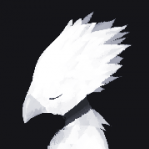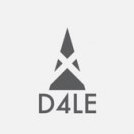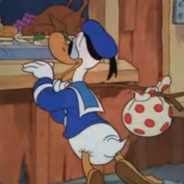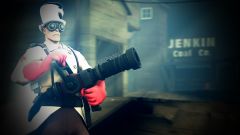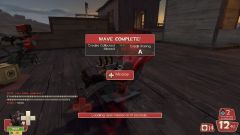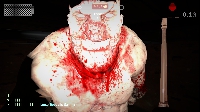How to play the medic
Things you need to know
1. Survival
2. Maximising healing
3. Uber management
4. Communication
5. Awareness
Survival
Positioning
1. Defensive (survival) and aggressive postures (maximising healing)
2. Identifying the safest forward and backward positions in a section of the map
3. Following at max range from the pocket (defensive) or front most player (aggressive)
4. Selection and use of cover
Dodging
Only dodge in situations when you must remain with the team. Need to know advantages.
1. Watch the enemy!
2. Stutter step
3. Strafe jumping
4. Strategies against individual classes
a. Scouts – movement and using corners, moving through your pocket
b. Snipers – exposure and crouch-jump-spin
c. Spies – checking back and awareness
d. Soldiers – making shots difficult, strafe jumping, what to do when they jump you
e. Demomen – making wasted stickies. Dodging grenades
Maximising Healing
Priorities
1. Rollouts – in spawn (soldier, demo). En route (scouts, one soldier, then the other). Entering midpoint (watch for your scouts and demos)
2. Deathmatch/ Fast push – Keep your beam on anybody that’s deathmatching, quick heals on patients that are not directly in combat
3. Travelling forward/ slow push – Full buff for scouts, roamer/ demo, pocket
4. Holding forward position – full buff for scouts, soldiers, demo
5. Holding far/running – keep your beam on the pocket, then whoever you can reach.
General
1. Always be healing
2. Understand the healing ramp
3. Avoid staying your beam on a player which has full buff. Unless you’re playing very defensively
4. Healing is not the same as following. Get players to come to you. You can only vary your position slightly to chase players before you have to follow your pocket again.
5. If both your soldiers are down and you have numerical advantage, confidently call your scouts and demo to guard you as you cautiously push or cap. Does not work if the enemy team has uber advantage and uber.
Uber Management
When to uber
1. Own survival (100hp mark, uncertainty)
2. Committed situations (high damage)
3. Not letting anyone die (counter uber situations, uber advantage)
4. Pushing past a choke point quickly (sticky trap situations)
When NOT to multi-uber
1. When only one player is in danger. You don’t want to multiuber in an uber trade, but if you have to, you have to
General
1. Place yourself in a central position during uber and look all around you
2. Place yourself in a safe position at the end of uber
Communication
What you need to communicate:
1. When you are threatened (as early as possible)
2. Where is your position, what is your combo doing
3. What is your uber charge percentage vs the enemy medic’s
4. What is your team’s numerical advantage/ disadvantage in the middle of a fight
Awareness
How to have it:
1. Look around you often, especially the routes which your pocket cannot cover
2. Listen to the comms
3. Press Tab often
4. Infer what your pocket is fighting from the spam he is receiving, listen for fighting that is happening if your pocket seems to be uncontested
5. Synthesise 2, 3 and 4 to form a mental picture of where your team is, where the enemy is, which places have been cleared of traps and ambushes, which places haven’t been cleared, where is the fight still occuring
Playing to Win
This section elaborates on the types of:
1. Advantages
2. Manoeuvers
3. Postures
The key is to understand the advantages of the situation you are in, adopt the appropriate posture, and look for the manoeuvers available to you
Advantage
Numerical
Who has the most players in fighting positions(They’re 2 down, we’re 3v5)? This is best communicated by the ghosts. When you die, call out that you’re dead, then immediately press tab. Make a note at that point whether you died early or late in the fight. Do this by looking at how many of the other team were dead when you pressed tab. At this point, you can help the fighting players by telling them how much we’re up or how much we’re down in terms of numbers that are actually fighting.
Spawn advantage
The second most important thing you can do by holding down tab is by watching who spawns first. By knowing where the engagement is still taking place, spawn locations based on capped points and when the ghosts (including yourself) spawn, you can tell which team is going to be reinforced first and roughly when. This is especially important in a fluid linear fight. It dictates how far you should extend in an advantageous push, and how far you should fall back when retreating.
Positional Advantage
One way of looking at this is in terms of space and height. Within a particular section of the map, the team which has more space gets spammed less (important for scouts to survive), and maximises the amount of spam damage dealt (important for demoman to safely move into his best spam range). If you are not at a numerical disadvantage, space also provides your team with access to routes where you can flank and backstab, completely surrounding the enemy.
Height advantage is the most relevant to soldiers. When a soldier controls height advantage, he creates space for his teammates, by "guarding" the space around him. Choose the correct high ground depending on where the enemy team is clustered. Taking height advantage must be flexible. A soldier holding height advantage for too long makes two mistakes. Firstly, his damage may be minimal if he’s only using long distance spam against an enemy that is falling back when he should be aggressively pushing the enemy team. Secondly, if he doesn’t know when to give up height advantage against multiple enemies that have pushed up in the space around him, his medic will be unprotected. At that point, he should fall back with his medic and cover the medic’s retreat through the choke, or tell the medic to run early while he jumps the enemy medic.
Uber
Who will be getting uber first? When and how big is the window when one team has uber and the other does not? There are 5 basic conditions.
1. Both teams have uber
2. You have uber while the other team does not
3. They have uber while you do not
4. Both teams do not have uber but you will have uber first
5. Both teams do not have uber but they will have uber first.
Uber advantage goes hand in hand with numerical and positional advantage even if you have uber while the other team does not. Here are some things to take note with uber management. The following decisions correspond to the above situations from 1-5
1. Trading ubers. The combo’s priority is to make the enemy medic pop uber, then hunt the demo, then do maximum splash damage on congregated enemies, then take whatever picks it can get. The rest of the team, if unable to bounce the enemy uber away, should focus on fighting away from the enemy ubered combo so that your medic only has to multi-uber if it is absolutely necessary. If your team is not doing this as well as the enemy team, the combo must secure an exit to fall back by the time uber ends. If you have a numerical advantage and both teams have ended uber, the medic must try to stay in the fight as your players hunt down the remaining enemy.
2. Popping uber with uber advantage should make use of multi-ubering to pre-empt players about to take damage, or to make sure nobody dies.
a. Popping uber while in a bad position and without having numbers to follow up with damage should only be done for the survival of the medic/ combo and you must ensure you are in a safe position at the end of the uber. You will probably have to forfeit the contested point if your patient cannot get kills.
b. Popping uber in a good position but without numbers increases the chance that you will get picks and creates a brief window where you will have numerical advantage as you are reinforced before your enemy. This window is larger if you have the midpoint due to spawn location advantage. This window closes when the enemy medic gets uber/ or is reinforced. At this point, the team should be securing position and stacking the point for a quick cap in preparation for the enemy’s counter uber.
3. Medic/ combo should hang back while the team looks for opportunities to force uber. You don’t want to give up too much territory without making the enemy medic uber unless you’re at a large/moderate numerical disadvantage as well.
4. If all else is equal, slow push while keeping the medic safe. Try to time getting uber with engaging the enemy combo to kill the enemy medic quickly. Fake uber to scare them off for free territory or point.
5. If you have numerical advantage, try to flank and kill the medic as soon as possible. If the enemy medic retreats safely, take position and cap points instead of going for kills because the numerical advantage can disappear very quickly when you’re pushing and the medic will achieve uber soon. If so,use position to pop uber and fall back quickly.
Manoeuvering
Lines
We can imagine the entire map as a big linear fight, with choke points that favour the holding team, and open spaces that favour the team with more numbers. A linear set of manoeuvres can be either static, or fluid.
In a static linear manoeuvre, the disadvantaged team immediately falls back behind the choke and gives up the point. They ascertain whether the delay the opposing team suffers in capping the point is enough for their reinforcements to catch up. This determines if they hold their current choke, or fall back further to another choke. Hence the team has only two postures: aggro push and falling to hold the next choke. This leads to many stalemates and relies on key picks before the situation changes.
In a fluid linear manoeuvre, the disadvantaged team will try to maintain a presence (without further dying) by not just using the chokes but other positional advantages in the map. They will slowly give ground (without the medic dying) until their reinforcements arrive and try to pick off enemies that overextend, sacrificing only for key picks. They also have an easier time setting up ambushes and luring enemies into sticky traps because the enemy team does not have the luxury to check the entire area. The team has multiple postures, including slow push and holding far.
Likewise, the advantaged team will extend further than the cap point to push the other team back. By continuing to engage the enemy with a numerical advantage, your team can probably take the next point as well. Knowing the spawn timings is especially pertinent in this scenario. Overextending occurs when your team pushes without getting kills and the enemy team is reinforced with their spawns while some of your team is still capping the previous point.
Circles
When trading ubers, if your team is not at a major/ moderate numerical disadvantage, it’s possible to avoid the enemy uber by wrapping round the enemy combo instead of falling back from it. Best executed with prior intel on where the push is coming from, and a decisive call from the heavier classes. Watch out for sticky traps on the enemy’s non-medic flank.
If you hold the middle point, the whole team can move to back cap. If you do not hold middle point, a strong enough force must double back to wipe the remaining enemy leaks. Another option is to leave both a hw guy and a sentry gun on your last point while the rest of the heavies circle to backstab or backcap. This is a good option when in desperation/ major uber disadvantage when they uber in.
Holding and Pushing
Fast push
In an aggressive push everyone is fully committed to the fight. The combo wants to move up close and deal as much damage as possible. It requires everyone to take part, even those on low health should stay within reach of the medic, call out for heals and spam from distance.
Conditions – With uber advantage and uber, or moderate/ major numerical advantage.
Objectives – Damage. Pop uber/ kill medic. Kill demo. Gain position for post-uber push.
Posture – Medic needs to be forward balancing heals between all players directly deathmatching. Players need to focus on maximising damage while scouts finish off low players. Trading for nearly any type of kill is acceptable. Soldiers usually jump straight at the enemy. Scouts that have leaked should try to kill instead of backcap (unless you’re attacking their last point).
Slow push
A slow push is when you are basically walking up the map and bullying the enemy off. The difference is that you don’t want to die or trade like in an aggro push. You try to use your health (medic advantage), spam (demo advantage) and positioning (soldier/scouts advantage) to outplay the enemy. Usually a slow push will get control of one side of the map and try to outflank the other side. Heavy classes should maximise spam, manage their health, and protect the medic. Be aware of traps.
Conditions – Minor/ Moderate Numerical advantage possibly after an uber trade. Uber advantage but not having uber yet.
Objective – Get some sort of positional advantage. Try to take ground without utilizing uber.
Posture – Medic needs to try to heal the scouts as much as viable so they can flank. Soldiers rotate or leap and bound for position or getting heals. Low health players that are waiting for heals still play a role in distance spam and protecting the medic/ demo. Avoid trading, unless it is a sacrifice for a more valuable player. Scouts should concentrate on leaking and harassing flanks.
Holding close
Holding is defending. It is the enemy who has to make the move. Primarily you have early pressure on the enemy team when they try to push through the chokes, so they uber earlier than they really want to. When holding close it means that you keep ALL the chokes closed. As the enemy team ubers and begins to enter, your team must decisively kill the leaked enemy, fall back, or counter uber for yourselves. When trading ubers, it’s viable to reverse positions with the enemy by circling them as they push in if you have control of midpoint. A minor uber disadvantage opens the option of faking uber, or circling/ holding far as they uber in, buying enough time for the uber.
Conditions – Equal ubers/ minor uber disadvantage. Minor numerical disadvantage but able to not leak.
Objectives – Making them pop uber earlier than you and countering soon after to save everyone (if you have uber). Stalling time while grinding uber (if the enemy already has uber and you are close to it, grind uber slightly behind the front lines). Getting any sort of pick.
Posture – Medic should be in a central position and up front. All players should receive buffed health especially the roamer and scouts. Combine fire in order to get picks. Avoid trading in most cases. Scouts should probe, and bait. Leaking behind the enemy team is suicidal unless your team is ready to push.
Holding far
When holding far there is a little pressure on the enemy when they try to push through your chokes. Your combo is always positioned at least one rocket jump away from the enemy combo but maintains a presence on the point, preferably at a flexible position with height advantage. Your medic is very hard to reach, usually on the opposite side from the enemy combo and near the exit. This is the preferred setup if the enemy has uber advantage. It is still possible to have pressure on the enemy combo, for example from a sniper, a stickytrap, distance spam, a hiding soldier/scout. What can work very well is sacrificing a scout or soldier to pop uber as the enemy medic commits to entering the area.
Conditions – Uber disadvantage against an enemy with uber. Moderate numerical disadvantage -- it is impossible to hold all the chokes with sufficient spam
Objectives – Maintain a presence on the point while being ready to fall back to the next choke. Punish overextending players (esp scouts). Sacrifice the point, positional advantage, or a player for key picks or to pop uber to allow for a solid counterattack when teammates respawn.
Posture – Medic should be healing from as far back as possible. He can remain in the centre but must move to the opposite side the moment enemy forces enter the point and get ready to run or fall back with his pocket unless you are absolutely confident of getting uber in the next few seconds. Demomen should be trapping, and retrapping the chokes. Soldiers should be distance spamming and looking for extended players. Scouts should be patient and opportunistic, their role is to hide, try to split the combo if the soldier is aggressive/ or sacrifice for an undefended demo/ medic. Scouts may also try to leak on the opponent’s weak flank to try for a backcap, defusing an enemy push while not actively engaging.
Running!
You lost four players, while the enemy still has most of their team up. The only thing that matters is surviving. Use suppressive fire and tank to keep your medic alive. If nobody makes any other mistakes you can have a solid defence again in about 15 to 20 seconds.
Conditions – Major numerical disadvantage
Objectives – trying to conserve/ charge uber for a better occasion. A pick on an overextended enemy is a bonus which may allow for a counterattack when reinforcements arrive.
Posture – Medic should be as far as possible behind the most backward player, abandoning him if he has to. Players that cannot escape should try to trade, players that can escape should regroup with the medic as soon as possible and use suppressive fire.
Trading Ubers
Trading ubers with equal numerical advantage is the most unique situation in the game in that some players must be extremely aggressive, while others must kite. Whichever team does this better is in a better numerical advantage at the end of the uber push.
The team that is defending last point in an uber trade is at a slight disadvantage because they have do not have an option to fall back without leaving the last point vulnerable (this is especially true in small last points like badlands, gullywash and freight). As such, the medic is usually forced to multi uber and it is important that he uber later than the attacking medic.
Attacking large last point maps like granary and obscure may require a different strategy for attackers in a stalemate position because the defending team can kite around the last point for a catastrophically long time, ubering much later. Sacrificing players to pop uber, holding far and popping uber to defend the fourth point and then a slow/fast push to establish positions in the enemy’s last point is a strategy that tests the entire team’s understanding of numerical, spawn, uber, and positional advantages.
Alternatively, the simpler option of patiently waiting for a pick before ubering into the last point is still an effective play.
Conclusion
Individual skill and teamwork have equal importance. While what I have tried to highlight in the above seems to be formulaic, the difficulty is in getting the whole team to be on the same page at the same time. The second difficulty is for the whole team to react to changes in the situation at the same time in an appropriate fashion.







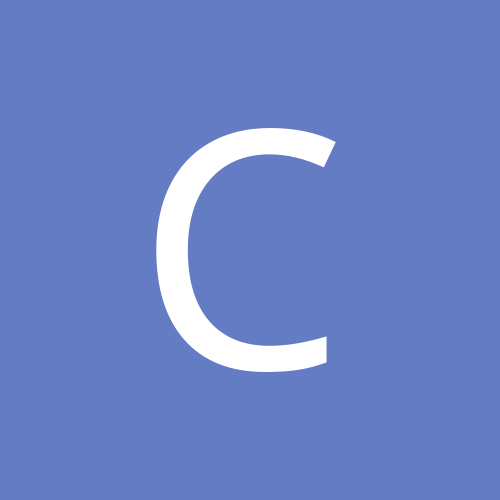


 emir.
emir.










